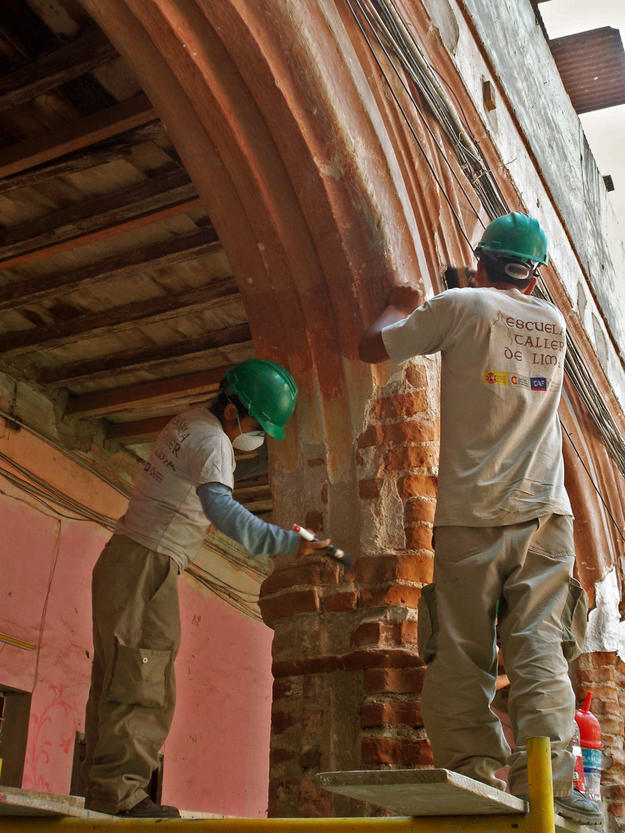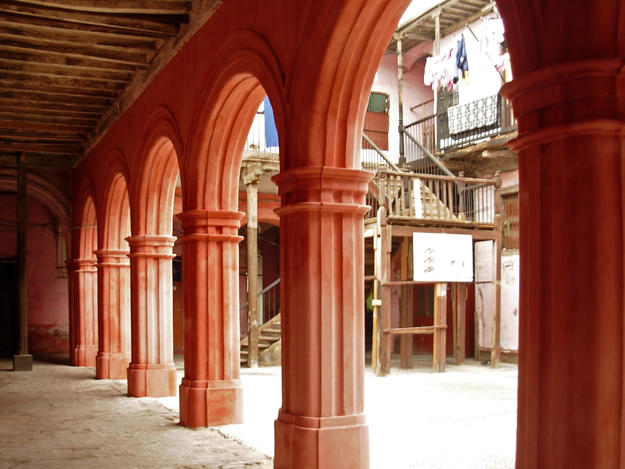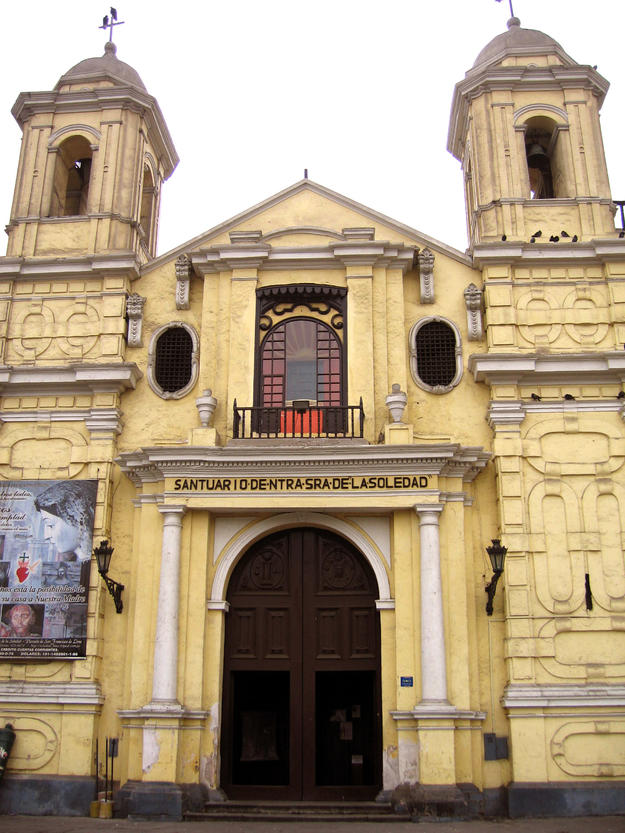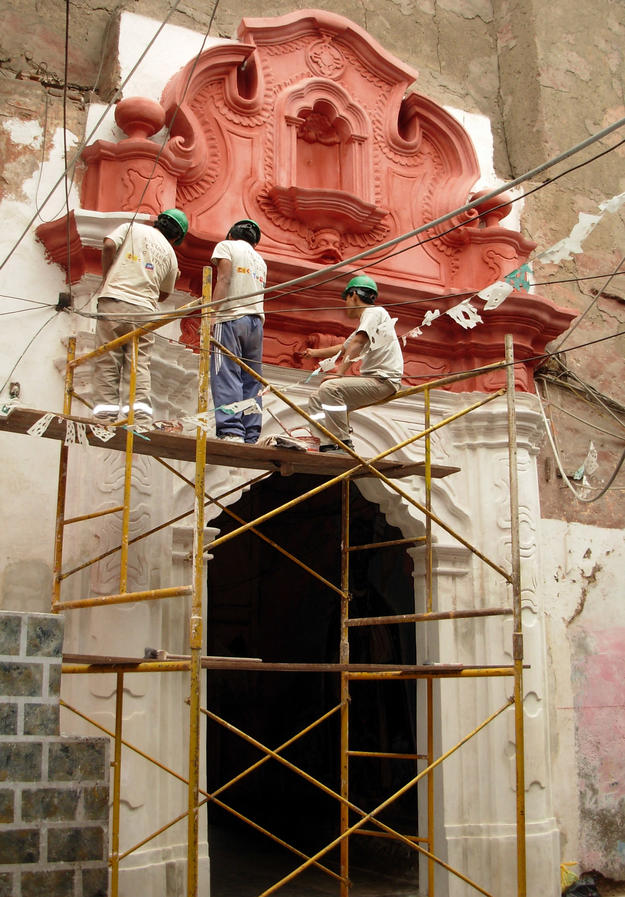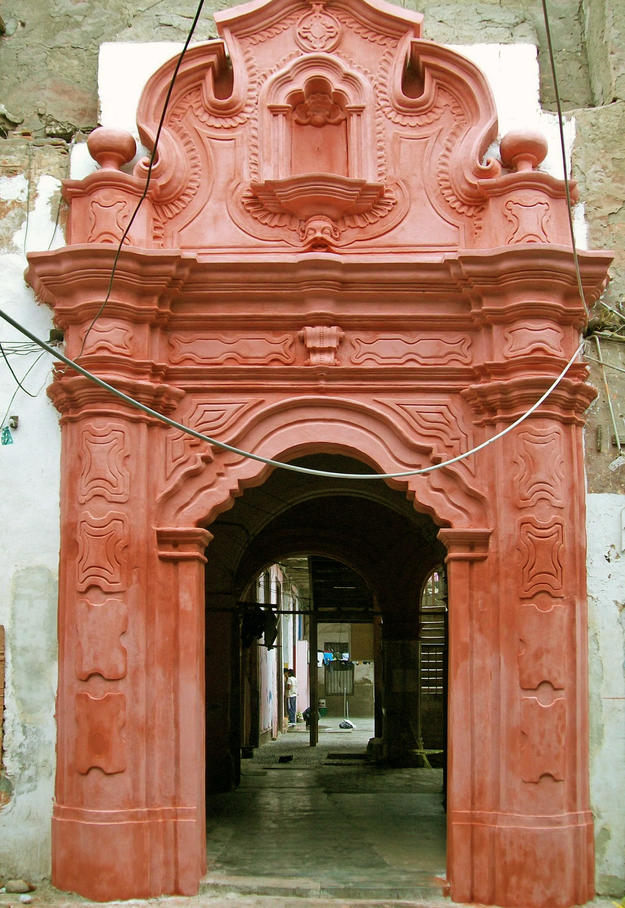Lima Historic Center
2008 World Monuments Watch
Founded by Francisco Pizarro in 1535 as "the City of Kings," Lima was laid out according to the standard Spanish colony grid plan, superimposed on old Inca roads. In 1544, Lima became the Viceroyalty of Peru, which until the eighteenth century controlled a territory extending from Panama to the Strait of Magellan. From its foundation until the establishment of free trade at the end of the eighteenth century, Lima's port of Callao was the point of entry for all trade from Spain, Mexico, and China to South America. Prospering from this monopoly, a wealthy class emerged, building impressive houses, palaces, gardens, and churches.
Although an economic boom during the first half of the twentieth century brought many urban improvements to the city—such as paved streets, markets, and public buildings—the gentrification resulted in a virtual abandonment of Lima's historic center by wealthy owners who were eager to move to newly created suburbs and business centers. Former mansions were subdivided by poorer tenants and the city infrastructure became overloaded. Despite several attempts at rehabilitation, countless monuments and residences in the historic center were abandoned and threatened by collapse.
Restoring a National Monument
In 2008, the Historic Center of Lima was listed on the World Monuments Watch. The Convent of Our Lady of El Rosario, built in the sixteenth century, was chosen as a pilot conservation project. The convent, a National Monument since 1972, contained up to eight cloisters and courtyards occupying two city blocks. One courtyard and cloister became part of a residential complex owned by the Beneficent Society of Lima, a philanthropic organization that provides support for the poor and the sick.
We joined forces with the Escuela Taller de Lima, whose trainees worked on the restoration with support of the Population Research and Documentation Center CIDAP and the local neighborhood association. After an assessment and historic documentation of deterioration and interventions over the years, the implementation phase in 2010 included the cleaning and restoration of the Rococo portal and public areas. Several workshops and programs were developed to encourage community participation and educate young tenants to become capable stewards of a piece of Lima’s cultural heritage. These helped instill awareness of the complex’s historic importance to residents and the surrounding neighborhood. The conservation of the complex, now called Casa de las Columnas, was completed in 2010.
We joined with the CIDAP and local preservation specialists to develop “Historic Center of Lima, a Living City,” an exhibition that has traveled to Peru, Ecuador, Cuba, Spain, and Italy, and also offers a tour of the historic core of Lima, generating broader public awareness and appreciation for the remarkable living heritage of the city.

